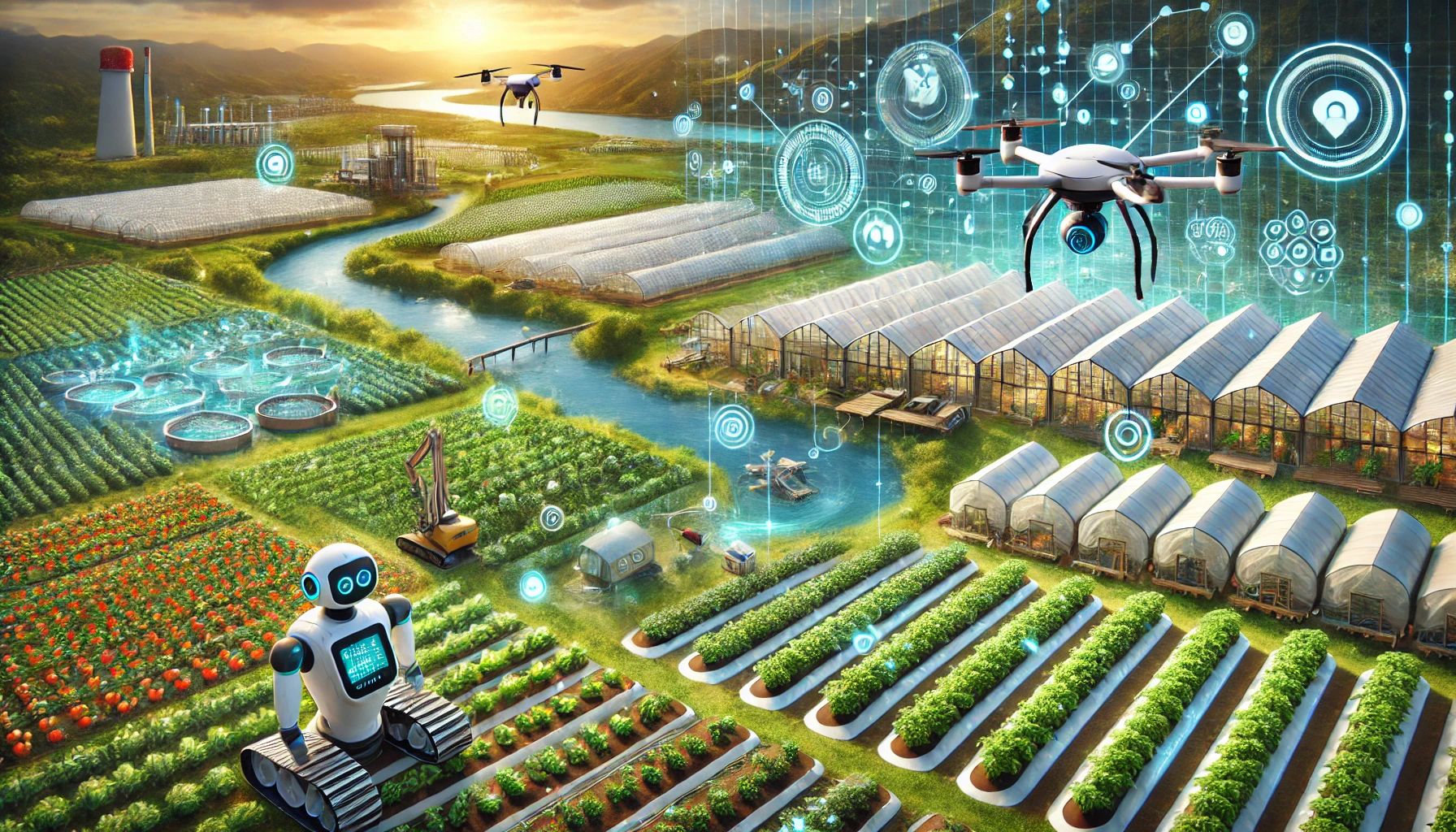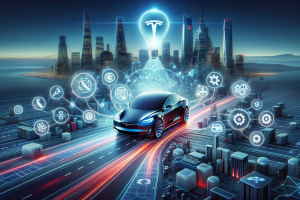Smart Agriculture in Japan is Revolutionizing Farming with AI, Robotics, and Precision Farming
Smart Agriculture in Japan: Japan is at the forefront of smart agriculture, blending tradition with cutting-edge technology to address modern agricultural challenges. As the global population grows, so does the demand for more efficient and sustainable farming practices. In Japan, smart farming is leading the way, utilizing technologies like AI, robotics, and precision farming to increase productivity and enhance food security.
In this article, we’ll explore how smart agriculture in Japan is transforming the industry, and how technologies such as IoT, agricultural drones, and land-based fish farming are reshaping the country’s agricultural landscape.
What is Smart Agriculture in Japan?
Smart agriculture involves using technology to optimize farming practices. In Japan, this means integrating tools like AI, IoT, and robotics to streamline operations and maximize yields. These innovations enable farmers to monitor crops, reduce labor requirements, and make data-driven decisions that improve efficiency and sustainability.
Addressing Agricultural Challenges
Japan’s agricultural sector faces several challenges, including an aging workforce, labor shortages, and limited arable land. To address these, the country has adopted smart farming techniques that help alleviate the pressures on farmers while boosting productivity. AI in agriculture in Japan helps automate tasks that were once labor-intensive, making farming more manageable and cost-effective.
The Role of AI and Robotics in Agriculture
One of the most transformative technologies in smart farming is AI. In Japan, AI in agriculture is used to predict weather patterns, optimize irrigation, and even determine the best time for harvesting. Let’s take a closer look at how AI and robotics are driving change.
AI in Agriculture Japan: A Smarter Approach to Farming
AI technology enables farmers to analyze vast amounts of data. For example, AI-powered systems can monitor soil conditions, moisture levels, and crop health in real-time. In some cases, AI can even identify pest infestations early, helping farmers take corrective actions before significant damage occurs.
Moreover, robotics in agriculture in Japan is helping farmers automate tasks such as planting, weeding, and harvesting. This is particularly valuable in greenhouse farming, where robots can pick delicate fruits and vegetables without damaging them.
Precision Farming in Japan: Enhancing Efficiency and Sustainability
Precision farming is another crucial aspect of smart agriculture in Japan. By using sensors, GPS, and data analytics, precision farming enables farmers to manage their fields down to individual plants. This approach optimizes the use of water, fertilizers, and pesticides, reducing waste and minimizing the environmental impact of farming.
How Precision Farming Works
In precision farming systems, sensors are placed throughout the field to collect data on soil moisture, nutrient levels, and plant health. This data is then fed into an AI system that adjusts irrigation schedules and nutrient delivery. In some cases, drones equipped with cameras are used to monitor crop growth, allowing farmers to detect issues like disease or drought before they become critical.
IoT in Agriculture: Connecting Farmers to Their Fields
The Internet of Things (IoT) is playing a critical role in Japan’s smart agriculture movement. IoT in agriculture in Japan connects farmers to their crops via devices that monitor soil, weather, and crop conditions in real time. This connectivity allows farmers to manage their operations more efficiently, even from remote locations.
IoT Systems in Action
IoT sensors can track everything from soil health to humidity, helping farmers make data-driven decisions. These systems send alerts to farmers when conditions change, such as when a plant needs water or when weather conditions are about to shift. By automating routine tasks like irrigation, IoT significantly reduces labor and resource use.
Agricultural Drones: The Eyes in the Sky for Japan’s Farmers
Agricultural drones have become an essential tool in smart farming. These drones are equipped with high-resolution cameras that capture detailed images of crops. In Japan, agricultural drones are used to monitor large fields, check plant health, and even spray crops with precision.
Drone Technology in Smart Farming
These drones offer several advantages. They can cover large areas quickly, capturing detailed data that helps farmers identify problems like pest infestations or nutrient deficiencies. Drones in agriculture also reduce the need for manual labor, making it easier for farmers to manage their crops more efficiently.
Smart Fisheries in Japan: Transforming Aquaculture
Beyond agriculture, smart technology is also revolutionizing Japan’s fisheries. Smart fisheries and aquaculture use AI, IoT, and robotics to optimize fish farming. With Japan’s limited natural fishing resources, smart aquaculture ensures sustainable fish production.
Smart Aquaculture: Enhancing Fish Farming
In smart aquaculture, sensors monitor water quality, temperature, and oxygen levels to ensure optimal conditions for fish growth. Some fish farms even use AI to analyze the behavior of fish, adjusting feeding schedules to minimize waste and prevent overfeeding.
Robotics in Agriculture and Fisheries: A Sustainable Future
Robotics plays a significant role in both smart farming and smart fisheries. In land-based fish farming in Japan, robots are used to automate feeding, monitor fish health, and clean tanks. These systems help farmers reduce labor costs and ensure higher-quality fish.
Land-Based Fish Farming: A Growing Trend
Land-based fish farming in Japan is becoming more popular as a sustainable alternative to traditional fish farming methods. This method allows for better control over the environment, reducing the risk of disease and improving fish quality (Open Access Government). Additionally, land-based farms minimize the environmental impact of fishing by reducing the need for marine resources.
Japan Leads the Way in Smart Agriculture and Fisheries
In conclusion, Japan’s smart agriculture and fisheries technology is transforming the industry by integrating AI, robotics, IoT, and precision farming. From using drones in agriculture to implementing smart aquaculture systems, Japan is setting a global example for sustainable farming and fisheries. These innovations not only increase efficiency but also ensure long-term sustainability for future generations.
As the world faces challenges like climate change and food security, smart farming solutions provide a glimpse into the future of agriculture. Whether it’s through AI in agriculture, precision farming, or land-based fish farming, Japan’s technological advancements are helping to create a more resilient and efficient agricultural sector.
To learn more about how smart technologies are shaping the future of agriculture, check out Regent Studies for further insights and resources.




